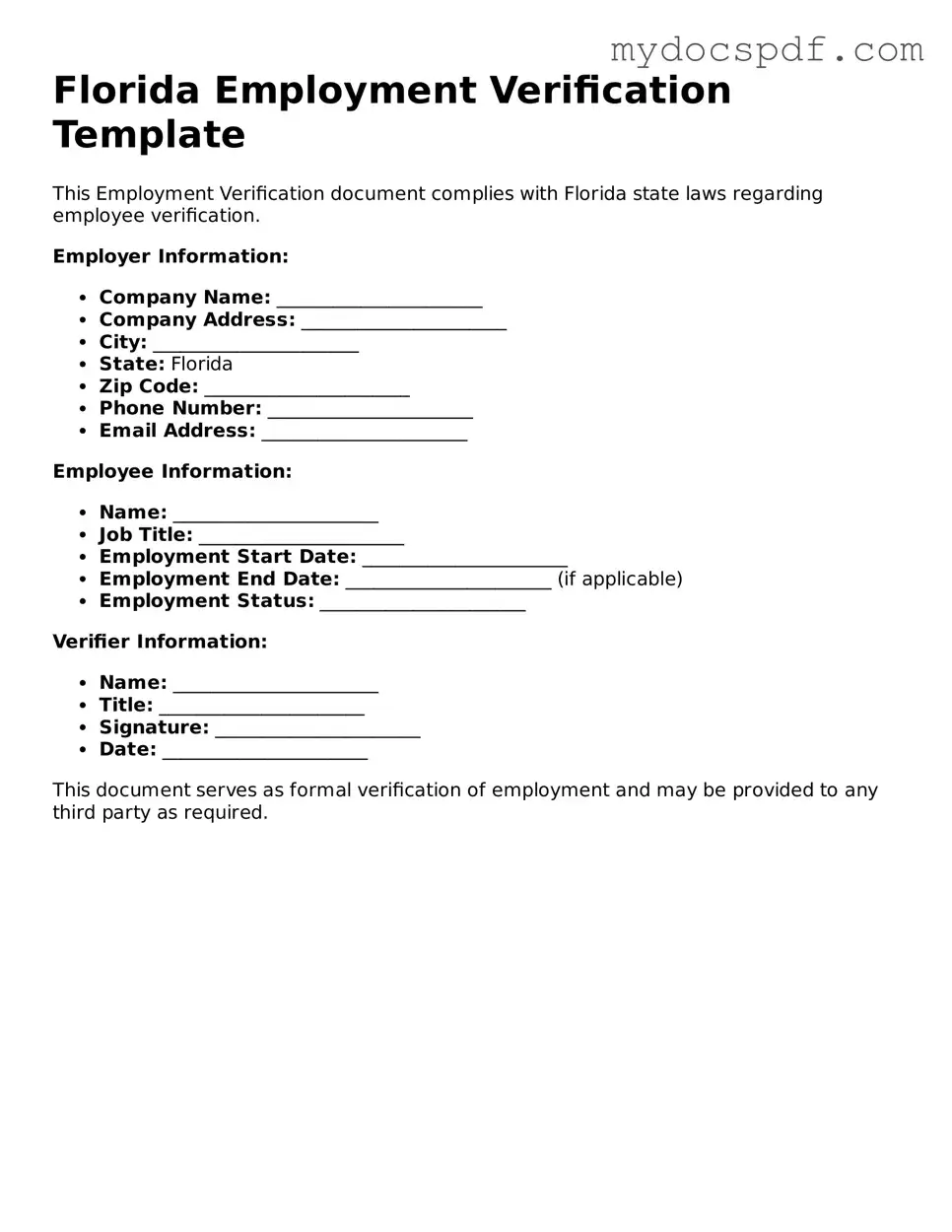In the bustling world of employment, ensuring that a potential employee's credentials are legitimate is crucial for both employers and job seekers alike. The Florida Employment Verification form serves as a vital tool in this process, helping to confirm an individual's work history, job title, and other essential details that reflect their professional background. This form not only aids employers in making informed hiring decisions but also protects employees by ensuring that their qualifications are accurately represented. Typically, it requires the completion of specific sections that capture pertinent information such as the employee's name, the employer's contact details, and a summary of the employee's roles and responsibilities. Additionally, it may include sections for both the employer and employee to provide signatures, thereby validating the information provided. By understanding the nuances of this form, both employers and employees can navigate the employment landscape more effectively, fostering transparency and trust in the hiring process.
